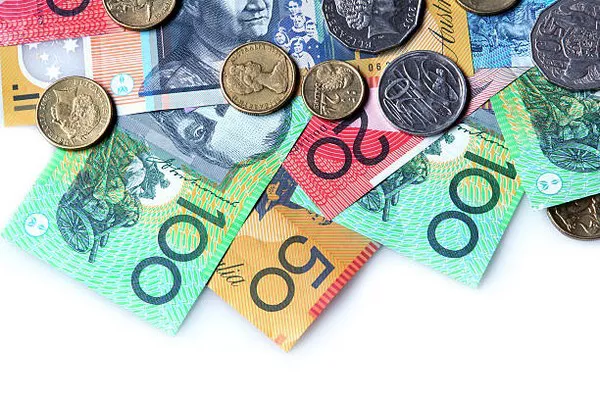In the realm of international finance, exchange rates play a pivotal role in determining the value and purchasing power of currencies across borders. For Australians looking to travel or make cross-border transactions, finding the most favorable exchange rates can significantly impact their financial decisions. The strength of the Australian dollar (AUD) relative to other currencies can vary widely depending on global economic factors, trade balances, interest rates, and geopolitical events. In this article, we will delve into the question of which country offers the best exchange rates for the Australian dollar, exploring key considerations and current trends in global currency markets.
Understanding Exchange Rates
Exchange rates represent the value of one currency relative to another and are typically expressed as the amount of one currency needed to purchase one unit of another currency. These rates are determined by supply and demand dynamics in the foreign exchange market, where traders, investors, central banks, and governments engage in currency transactions.
For Australians seeking to convert AUD into foreign currency, a favorable exchange rate means that their dollars will translate into more units of the foreign currency, thus providing greater purchasing power abroad. Conversely, a less favorable exchange rate means that Australians will receive fewer units of foreign currency for the same amount of AUD.
Factors Influencing Exchange Rates
Numerous factors influence exchange rate movements, including:
Interest Rates: Higher interest rates generally attract foreign investment, increasing demand for the currency and potentially strengthening its value.
Economic Performance: Strong economic fundamentals, such as robust GDP growth, low unemployment, and stable inflation, can bolster a currency’s value.
Political Stability: Countries with stable political environments are perceived as less risky for investment, supporting their currency.
Trade Balances: A country with a trade surplus (exporting more than importing) may experience a stronger currency due to higher demand for its goods and services.
Market Sentiment and Speculation: Investor sentiment and market speculation can drive short-term fluctuations in exchange rates.
Best Countries for Exchanging Australian Dollars
To determine which countries offer the best exchange rates for the Australian dollar, we must analyze current exchange rate trends and economic conditions across various regions. It’s important to note that exchange rates are subject to constant fluctuation, so what may be favorable today could change tomorrow. However, based on recent data and analysis, several countries stand out as potential destinations for favorable currency exchanges:
1. United States
The United States remains a popular destination for Australians, both for travel and business. As of the time of writing, the Australian dollar has historically performed well against the US dollar (USD), often providing favorable exchange rates for Australians visiting the US. With a relatively stable economic environment and robust trade ties between the two countries, converting AUD to USD can offer good value.
2. New Zealand
Across the Tasman Sea, New Zealand is another country where Australians may find favorable exchange rates. The close economic ties and geographical proximity between Australia and New Zealand contribute to relatively stable exchange rates between the Australian dollar and the New Zealand dollar (NZD).
3. Eurozone
For Australians traveling to Europe, countries within the Eurozone can offer competitive exchange rates, particularly when the euro (EUR) is relatively weaker against the AUD. Economic conditions within the Eurozone, influenced by factors such as interest rates set by the European Central Bank (ECB) and broader geopolitical events, can impact the exchange rate.
4. Southeast Asia
Popular tourist destinations in Southeast Asia, such as Thailand, Indonesia (Bali), and Vietnam, often provide favorable exchange rates for Australians due to lower costs of living and competitive pricing in local currencies (Thai Baht, Indonesian Rupiah, Vietnamese Dong). Australians exploring these regions can benefit from a stronger AUD against these currencies.
Tips for Maximizing Exchange Rate Benefits
While exchange rates are largely influenced by macroeconomic factors beyond individual control, there are strategies that Australians can employ to make the most of their currency conversions:
Monitor Exchange Rates: Stay informed about currency market trends and historical exchange rate movements to identify opportune times for currency exchanges.
Use Currency Exchange Services: Compare rates offered by banks, currency exchange offices, and online platforms to find the most competitive rates with lower fees.
Consider Economic Conditions: Factor in economic stability, inflation rates, and geopolitical events when planning currency exchanges for international travel or investments.
Diversify Currency Holdings: For frequent travelers or investors, consider holding a mix of currencies to hedge against unfavorable exchange rate movements.
See Also Is an Australian $2 Note Worth Anything?
Conclusion
In conclusion, the question of which country offers the best exchange rates for the Australian dollar is nuanced and subject to constant change. However, by monitoring global economic conditions, understanding key drivers of exchange rate movements, and leveraging available resources, Australians can navigate international currency markets more effectively. Whether traveling for leisure, business, or investment purposes, optimizing currency exchanges can enhance financial outcomes and overall experiences abroad. Ultimately, the pursuit of favorable exchange rates underscores the interconnectedness of global economies and the importance of informed decision-making in international finance.


